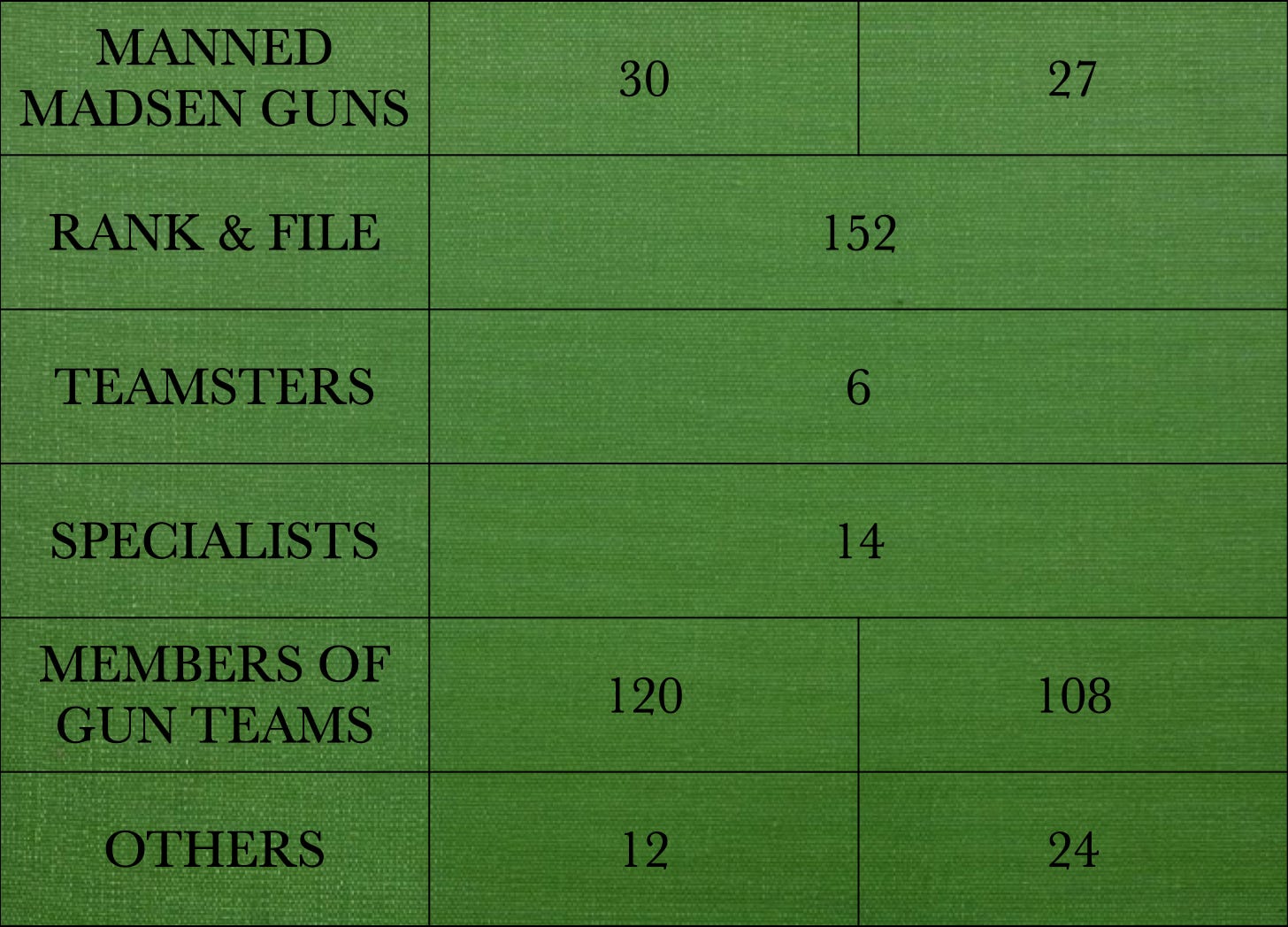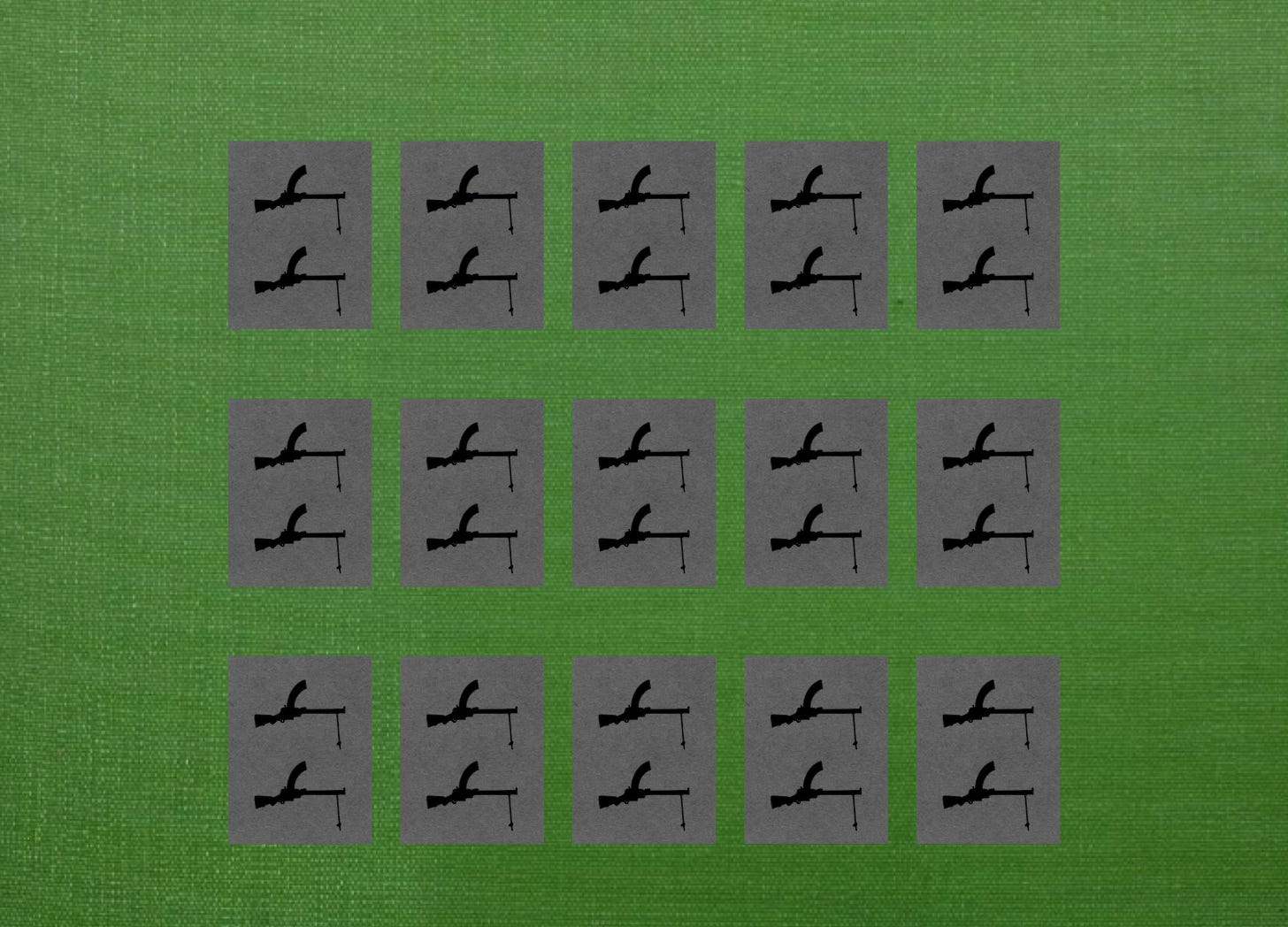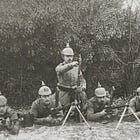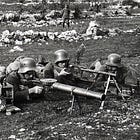Of the three tables of organization for Musketen companies that I have found, only one describes the structure of elements smaller than a company. (This is the establishment, dated 24 February 1917, that provides a framework for a Musketen company armed with Lewis guns.)
Because of this, trying to figure out how many four-man Madsen gun teams fit into a squad, and how many squads fit into a platoon, obliges me to resort to the last refuge of the scoundrel. That is, I have been forced to break out my spreadsheet software and craft a pair of models.
As long-time readers of the Tactical Notebook might expect, the first of these models reflects prejudices I have harbored for all of my adult life. It assumes that each Musketen company, like the rifle platoons of US Marine Corps of much of the past eight decades, was an essentially triangular organization. That is, it consisted of three platoons, each of which contained three three-team squads.
This model provides a job for each of the three lieutenants allowed to each Musketen company by the establishments of 10 August of 1915 and 29 March 1916. It also fits nicely with the number of sergeants (other than specialists) authorized by the former (but not the latter) framework. That is to say, it could employ each of these non-commissioned officers as a squad leader.
Unfortunately, making the triangular model work requires the sequestration of three of the thirty Madsen guns allowed to each company by the aforementioned establishments. This echoes the contemporary practice of providing a spare Maxim gun to each machine gun company. At the same time, it fits in poorly with the claim, found in many of relevant documents, that the number of Musketen companies formed had been limited by the modest number of Madsen guns on hand. Finally, keeping three light machine guns in the baggage train would have increased the number of men (whether privates or Gefreiten) in each company who were neither teamsters [Trainsoldaten], specialists, nor members of Madsen gun teams.
Providing each Musketen platoon with five two-team squads, addresses these objections. This ‘pentomic’ model also dovetails with the generous number of sergeants (other than specialists) provided by the table of organization adopted on 29 March 1916. That is, a company made up of three five-squad platoons could employ fifteen of its sixteen sergeants as squad leaders.
The pairing off of Madsen gun teams to form binary squads also fits in nicely with a German account of fighting during the first month of the battle of the Somme (July 1916.) This short book, which describes fourteen engagements in which elements of a Musketen company took part, provided figures for the number of Madsen guns employed in six of those fights. In all of the latter cases, that number, whether 20, 10, 6, 6, or 2, was an even number.
Sources:
Albrecht von Stosch Somme-Nord (1. Teil) [Somme-North (Part 1)] (Oldenburg: G. Stalling, 1927) pages 33, 61, 72, 243, and 245.
Tables of organization, dated 10 August 1915 and 29 March 1916, preserved in Folder PH 3/1237 at the German Federal Archives [Bundesarchiv]. (For a stand-alone copies of these documents, please visit this page at the Military Learning Library.)
To Share, Support, or Subscribe:
For Further Reading:












